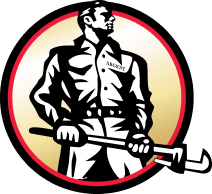Steam Heating Installation & Repairs
Steam is one of the oldest known heating agents. Steam powered heating systems were originally used because of the lack of required pumps in a steam heating piping system. While steam heating systems are no longer regularly installed in new homes, older buildings are likely to be using steam heating. Additionally, due to the fact that steam heating is especially adept at heating multi-residence situations, steam heating systems are still regularly used in multi-family houses, apartment buildings and older office buildings.
When it comes to understanding steam heating, determining whether steam is the right heating agent for a home or office building and getting the space prepared for the system, it is well advised to speak with a HVAC professional. To assist in decision-making, this article provides a brief overview of steam heating, an explanation of how it works and what maintenance is required and a review of the advantages and disadvantages of using steam systems for your home or office heating system.
How Steam Heating Works – The Heating Process
Steam heating systems operate like a teakettle. Water is heated. Steam is created and released. The house is warmed. To expand upon that very basic overview, the full process is outlined below.
- A boiler uses a gas or oil fired burner to heat water (generally stored in a water tank or water tube boilers, depending on whether the home is using a gas steam boiler or an electric steam boiler).
- This heated water is then converted into steam. The steam then travels to radiators or convectors through a series of pipes. These radiators or pipes then give off heat and warm the room.
- One Pipe vs. Two Pipe Systems: Steam heating systems can operate by using a single or double piping system. In single pipe systems (which are most common), a single pipe is used to supply steam to radiators and then return the condensed water from that steam back to the water tank. Two pipe systems have separate pipes for each of these functions. One pipe sends the steam to the home’s radiators or convectors while a second, separate pipe returns the condensed water back to the system’s water tank. This two pipe system is more common in newer buildings.
- The steam cools and condenses back into water. This water is then returned to the boiler and is heated again to be recycled back into steam and sent back into the radiators to complete the next heating cycle.
Maintaining A Steam Heating System
One of the disadvantages of using a steam heating system is the required regular maintenance. When it comes to maintaining a steam heating system, there are tasks that can be safely completed by a home or office owner and tasks which require an HVAC company to safely complete.
- Homeowner Maintenance: Tasks a homeowner can take care of include checking safety valves and pressure and water level gauges. Anything more complicated that these tasks must be left to an HVAC professional for safety reasons.
- Professional Maintenance: Professional maintenance should be completed annually, at the very least. An HVAC professional should come and check all control and gauges, inspect and adjust the burners, check the chimneys and flues for blockages and any leakage and inspect and adjust all air valves in the system’s radiators.
Advantages of Steam Heating Systems
A steam heating system’s primary advantages lie in the limited number of moving parts required. Steam heating systems have significantly less moving parts than newer, more complicated systems. This provides increased durability and reliability if properly maintained. Steam heating allows for heat to be distributed in limited locations in a building. This means that owners are able to heat individual rooms and leave others unheated. Therefore, steam heating systems are preferred in multi-family homes and large apartment buildings. Lastly, steam heating systems provide clean, dust-free heat. Homeowners with allergies often find this heating option to be less aggravating to their health.
Disadvantages of Steam Heating Systems
The number of disadvantages associated with steam heating is one of the primary reasons why newer models have started becoming more common. The primary disadvantage of steam heating is the lack of efficiency and heat provided. Due to the required heating of a boiler, there is also an increased safety risk associated with steam heaters. Homeowners often complain of lag times between when the system is turned on and when heat is delivered through the radiators. Lastly, these radiators can warp a homeowner’s floors.
Contacting An HVAC Professional For Steam Heating Installation and Repair
If steam heating is the right option for the home or building in question, an HVAC professional from Argent Plumbing can assess heating needs, help homeowners choose the best heating system and install the steam heating system quickly and safely. Call 908-286-1920 or contact us online to speak with an HVAC technician today.


